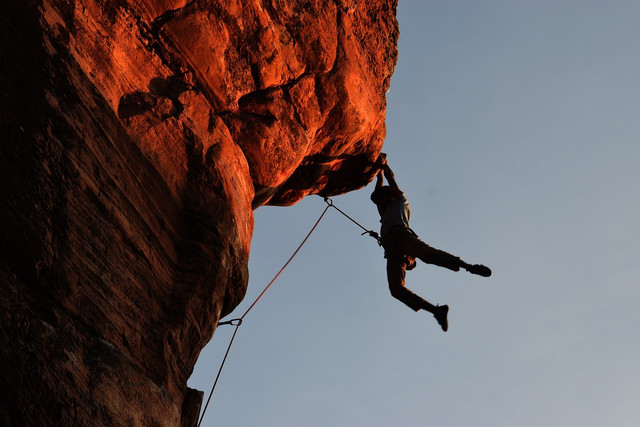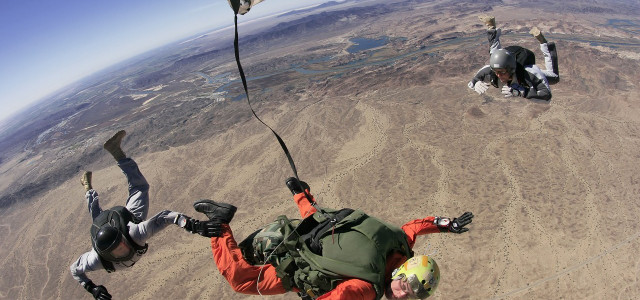Sensation seeking is a specific personality trait that most people have, to a certain extent. Find out more about sensation seeking and how to safely partake.
Sensation seeking is a personality trait theorized by Marvin Zuckerman who was a psychology professor at the University of Delaware. The concept of sensation seeking is quite literally the searching for experiences and feelings that create sensations which are varied, novel, complex and intense.
The desire for these sensations is so strong that one is willing to accept physical, social, legal and financial risks involved. Still, sensation seeking differs from risk-taking. While sensation seeking can include risk-taking, it doesn’t necessarily. It depends on the type of sensation seeking involved. There are four different types of sensation seeking, according to Zuckerman. These are defined according to the “Sensation Seeking Scale” — a theoretical framework designed by Zuckerman to measure the personality trait.
- Thrill and Adventure Seeking: a desire to engage in dangerous, risky behaviors such as skydiving, speed racing or cliff jumping.
- Disinhibition: the desire for social and sexual disinhibition, such as wild partying and illegal activities.
- Experience Seeking: search for new sensory and mental sensations through unconventional and non-conforming activities and new people.
- Boredom Susceptibility: an aversion to routine, dullness and repetition in all aspects of life.
Many sensation seeking activities are not risky, such as those associated with boredom susceptibility or experience seeking. In other cases, sensation seeking may involve risk that is ignored, minimized, or tolerated. Risk may even be seen as a positive in sensation seeking if one perceives it to increase the positive sensation arising from the activity, for example in Thrill and Adventure Seeking.
Zuckerman’s Sensation Seeking Scale



(Foto: CC0 / Pixabay / JESHOOTS-com)
Zuckerman’s Sensation Seeking Scale is a personality test he created to determine individual differences in their sensory preferences. The scale tests low to high sensory stimulation and determines how much a person enjoys the stimulation received.
It also helps to categorize individuals into the four different subcategories of the sensation seeking trait, by determining what is most compatible. Here are some examples of sample statements used to determine subcategories on the sensation seeking scale.
- “I often wish I could be a mountain climber.” (Thrill and Adventure Seeking)
- “I like wild, ‘uninhibited’ parties.” (Disinhibition)
- “People should dress in individual ways even if the effects are sometimes strange.” (Experience Seeking)
- “I can’t stand watching a movie that I’ve seen before.” (Boredom Susceptibility)
While Zuckerman viewed sensation seeking as one of the core personality traits of human beings, many scholars have contested this. Rather, it’s been determined that the personality trait of sensation seeking can be found under the umbrella of two of the Big Five personality traits: Researchers have found sensation seeking to be part of both ‘extraversion’ and ‘openness to experience’. Regardless, the personality trait and its four subcategories are an interesting way of understanding people.
Are You a Sensation Seeker?



(Foto: CC0 / Pixabay / wallace769)
If you recognize this personality trait within you, it’s a good idea to learn how to harness your sensation seeking activities so that they are safe for you and others. For example, you can partake in thrill and adventure seeking by going skydiving with a reputable company, or rock climbing while wearing a harness and taking proper safety precautions. Avoid activities that put yourself and others in harm’s way, such as drag racing.
Similarly, you can seek experiences through travel or exploring your own city in new ways. If you want to engage in disinhibition, consider deep meditation over drugs and alcohol. Those who are susceptible to boredom can make an effort to meet new people regularly and work jobs which are not monotonous. There are loads of ways to be a sensation seeker without taking dangerous risks or negatively affecting other people.
Read more:
- Can an Introvert Become an Extrovert? Your Options Explained
- How to Overcome Loneliness in the Moment
- 7 Signs of a Toxic Person & How to Deal with Them
Do you like this post?








